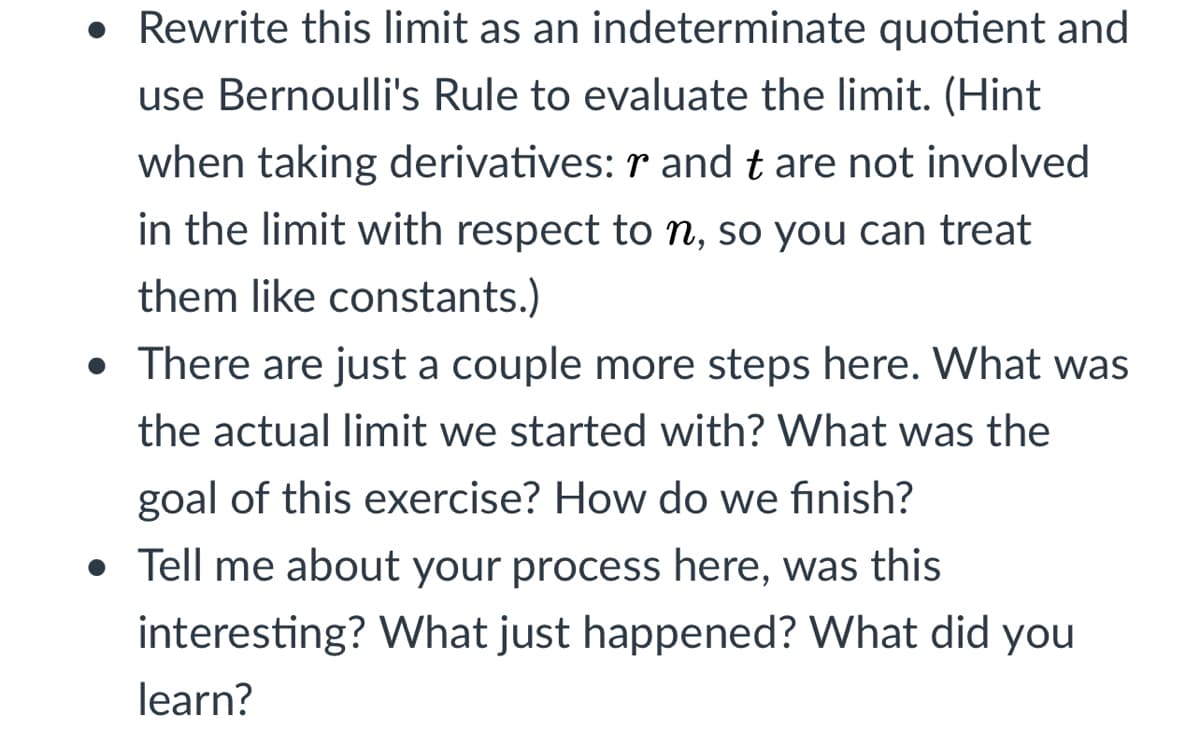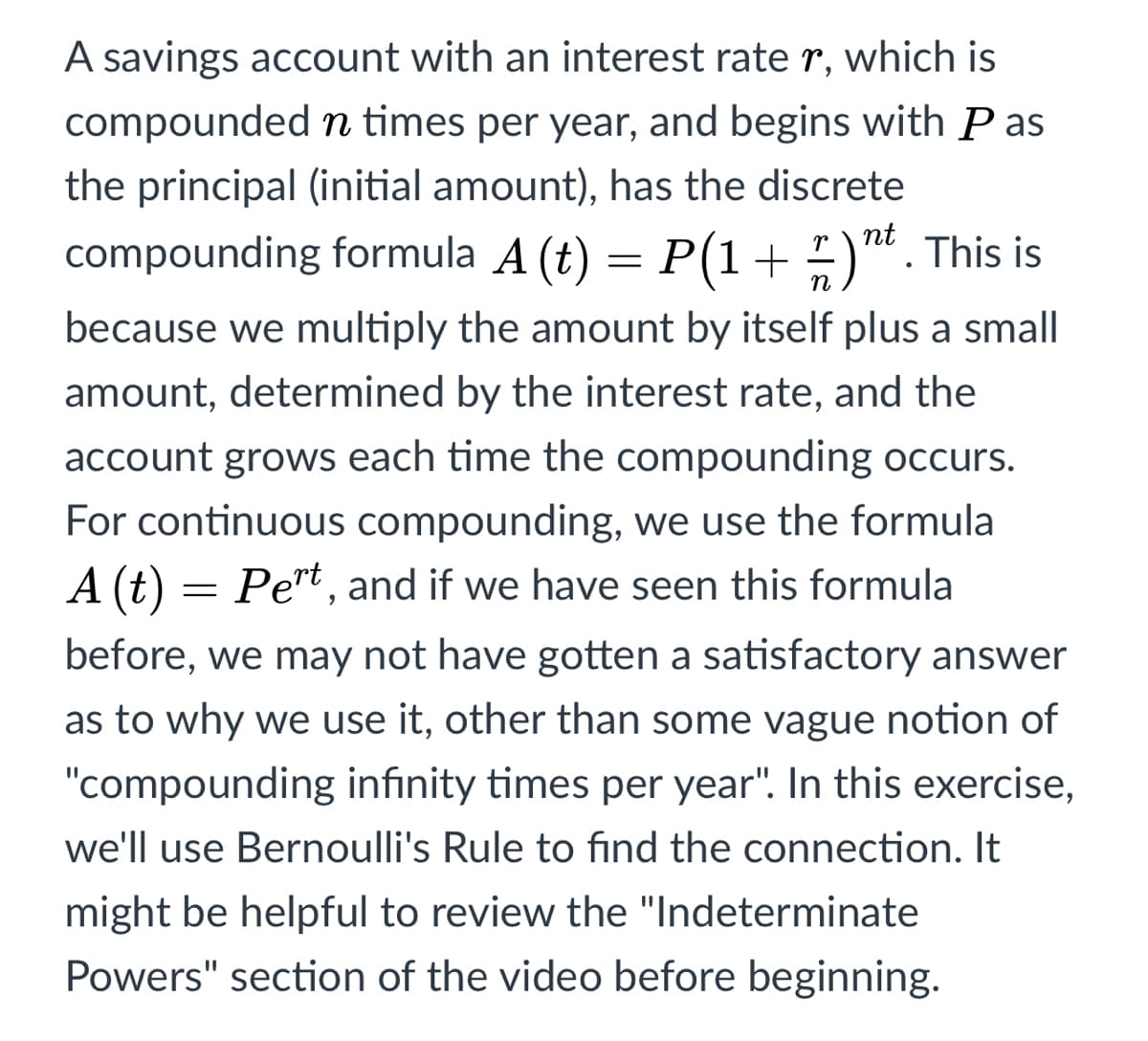A savings account with an interest rate r, which is compounded n times per year, and begins with P as the principal (initial amount), has the discrete nt compounding formula A (t) = P(1+)". This is because we multiply the amount by itself plus a small amount, determined by the interest rate, and the account grows each time the compounding occurs. For continuous compounding, we use the formula A (t) = Pert, and if we have seen this formula before, we may not have gotten a satisfactory answer as to why we use it, other than some vague notion of "compounding infinity times per year". In this exercise, we'll use Bernoulli's Rule to find the connection. It might be helpful to review the "Indeterminate Powers" section of the video before beginning.
A savings account with an interest rate r, which is compounded n times per year, and begins with P as the principal (initial amount), has the discrete nt compounding formula A (t) = P(1+)". This is because we multiply the amount by itself plus a small amount, determined by the interest rate, and the account grows each time the compounding occurs. For continuous compounding, we use the formula A (t) = Pert, and if we have seen this formula before, we may not have gotten a satisfactory answer as to why we use it, other than some vague notion of "compounding infinity times per year". In this exercise, we'll use Bernoulli's Rule to find the connection. It might be helpful to review the "Indeterminate Powers" section of the video before beginning.
Chapter6: Exponential And Logarithmic Functions
Section6.1: Exponential Functions
Problem 68SE: An investment account with an annual interest rateof 7 was opened with an initial deposit of 4,000...
Related questions
Question

Transcribed Image Text:• Rewrite this limit as an indeterminate quotient and
use Bernoulli's Rule to evaluate the limit. (Hint
when taking derivatives: r and t are not involved
in the limit with respect to n, so you can treat
them like constants.)
• There are just a couple more steps here. What was
the actual limit we started with? What was the
goal of this exercise? How do we finish?
• Tell me about your process here, was this
interesting? What just happened? What did you
learn?

Transcribed Image Text:A savings account with an interest rate r, which is
compounded n times per year, and begins with P as
the principal (initial amount), has the discrete
nt
compounding formula A (t) = P(1+ )". This is
because we multiply the amount by itself plus a small
amount, determined by the interest rate, and the
account grows each time the compounding occurs.
For continuous compounding, we use the formula
A (t)
Pert, and if we have seen this formula
before, we may not have gotten a satisfactory answer
as to why we use it, other than some vague notion of
"compounding infinity times per year". In this exercise,
we'll use Bernoulli's Rule to find the connection. It
might be helpful to review the "Indeterminate
Powers" section of the video before beginning.
Expert Solution
This question has been solved!
Explore an expertly crafted, step-by-step solution for a thorough understanding of key concepts.
Step by step
Solved in 2 steps

Recommended textbooks for you


Intermediate Algebra
Algebra
ISBN:
9781285195728
Author:
Jerome E. Kaufmann, Karen L. Schwitters
Publisher:
Cengage Learning


Intermediate Algebra
Algebra
ISBN:
9781285195728
Author:
Jerome E. Kaufmann, Karen L. Schwitters
Publisher:
Cengage Learning